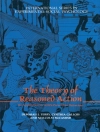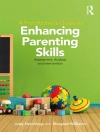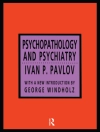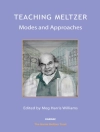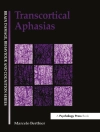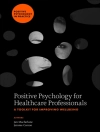Autism is in the public spotlight now more than ever as new
research and information appears almost daily. Although in many
ways this is a positive development it also presents challenges to
families and practitioners who want to keep up with the latest
developments and are left to sift through new information by
themselves to see what is credible and relevant for them.Each of us
needs a personal research assistant who can determine which
information we need to pay attention to and let us know how it
might affect our daily work and the children we are living with or
serve.
Since we each don’t have our own research assistants on
staff, I am delighted to recommend this wonderful book by Fred
Volkmar and Lisa Wiesner. Both of these talented professional
leaders have combined their scientific skills and understanding of
the field with great practical experience and ideas about how
research can be translated into clinical practice. The result is a
book that provides the best and most comprehensive information
about recent scientific developments and a splendid practical guide
for how they are being implemented and what we are learning in the
process. The issues are presented in all of their complexity but
translated into language that is clear, direct, and easy to follow.
The format also lends itself to understanding the complex issues
and their implications through excellent charts, question and
answer sections, and chapters that vary from describing diagnostic
issues to stating very specifically how to expand and evaluate the
services one is receiving. The comprehensive references and lists
of additional resources also add greatly to the overall
package.
As a professional dedicated to understanding scientific advances
and helping families and teachers to utilize them most effectively,
I am very pleased to have an ally like this book available. I am
very grateful to the authors for providing a very credible,
practical, and relevant addition to our field to help the many
advocates and family practitioners to better understand the
exciting new developments and how they can be implemented in our
day to day work. Those taking the time to read through this superb
volume will find it time well spent that pays back dividends in
many different ways.
–FOREWORD by Gary B. Mesibov, Ph.D., Professor and
Director of TEACCH, Treatment and Education of Autistic and Related
Communication Handicapped Children University of North Carolina at
Chapel Hill
Jadual kandungan
Foreword ix
Preface xi
Chapter 1 What Is Autism? 1
Chapter 2 What Causes Autism? 25
Chapter 3 Getting a Diagnosis 45
Chapter 4 Getting Services 87
Chapter 5 An Overview of Educational Programs 119
Chapter 6 Educational Interventions 149
Chapter 7 Working with Young Children 193
Chapter 8 Working with School-Aged Children 233
Chapter 9 Adolescence, Adulthood, and the Future 277
Chapter 10 Managing Medical Issues and Problems 325
Chapter 11 Ensuring Safety 369
Chapter 12 Dealing with Seizures 387
Chapter 13 Dealing with Regression 407
Chapter 14 Dealing with Behavior Problems 423
Chapter 15 Considering Medications for Behavior Problems 453
Chapter 16 Managing Sensory Issues 483
Chapter 17 Managing Sleep and Sleep Problems 501
Chapter 18 Considering Complementary and Alternative Treatments 519
Chapter 19 Managing Sibling and Family Issues 551
Resources Lists Books and Websites 575
Appendix Criteria for Autism 579
Glossary 585
Mengenai Pengarang
FRED R. VOLKMAR, MD, is the Director of the Yale Child Study Center and coauthor of the Handbook of Autism and Pervasive Developmental Disorders, Third Edition, published by Wiley.
LISA A. WIESNER, MD, is a pediatrician in private practice in Orange, Connecticut.?? She is an assistant clinical professor of pediatrics at Yale who has research experience with autism.


